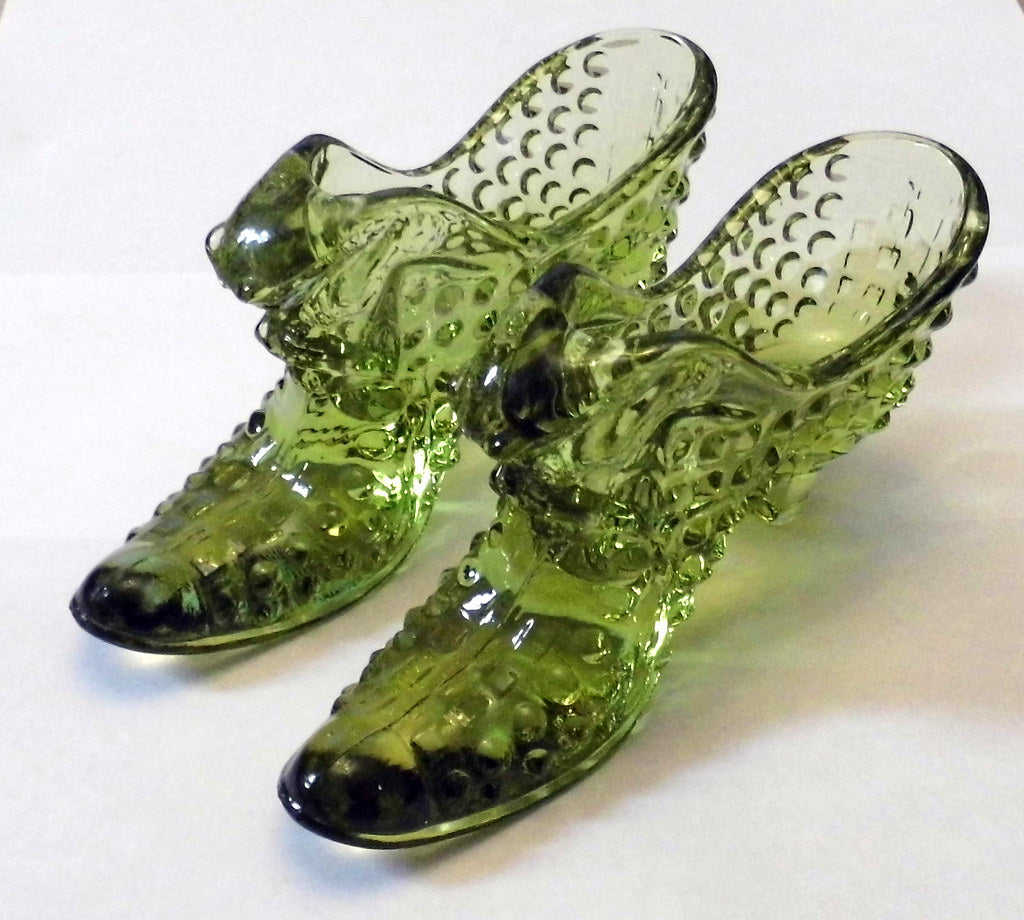How to Date Fenton Glass: A Collector’s Guide

Fenton glass is one of the crown jewels of American glass collecting. From dreamy carnival glass bowls to hand-painted milk glass, the company produced thousands of designs that still charm collectors today. But if you’ve ever stumbled across a Fenton vase at a thrift shop and thought, Okay, but how old is this thing? — You’re not alone.
Dating Fenton glass is part detective work, part art history, and part sheer obsession. Here’s how to crack the code.
1. Check for the Logo

Fenton didn’t always mark their glass, which makes early pieces a little trickier. Here’s a quick rundown of their marks by era:
- Pre-1970: Most pieces weren’t marked. If your piece appears old but lacks a logo, it could be a rare early Fenton treasure.
- 1970–1979: Fenton introduced an oval logo impressed into the glass, usually with the word “Fenton.”
- 1980s: Numbers were added below the logo to indicate the decade:
- Small “8” under the logo = 1980s
- Small “9” under the logo = 1990s
- 2000s–2011 (when production ended): The logo sometimes included “0” for 2000s, and some limited editions were also signed by the decorator.
Pro tip: If you see “Fenton” in script on a sticker, it’s likely mid-to-late 20th century, since they often used paper labels.
2. Pay Attention to Color
Fenton was famous for introducing unique colors, and many were only produced in certain decades:
- 1907–1930s: Early carnival glass in marigold, cobalt, amethyst.
- 1940s–50s: Milk glass and pastel opaque shades became popular.
- 1960s–70s: Bright, bold hues like ruby red and hobnail milk glass vases.
- 1980s–90s: Specialty colors like Rosalene (a pink that deepens with heat) and Burmese (a soft pink-to-yellow fade).
3. Look at the Pattern & Style
Some patterns scream certain eras. For example:
- Hobnail milk glass vases = 1950s–70s bestseller.
- Carnival glass compotes = early 1900s.
- Hand-painted floral pieces signed by artists = mostly post-1970.
4. Consider the Finish
Fenton’s iridescent carnival finishes were lush and bold in the early 1900s. Later reproductions (1970s onward) often have a slightly different shimmer—still pretty, but collectors can often tell by depth and sheen.
5. Cross-Check with Catalogs & References
Fenton has been so widely collected that dozens of reference books and online catalogs exist. If you’re stumped, collector forums, auction houses, or even Replacements.com are goldmines for narrowing down the decade.
Final Thoughts
Dating Fenton glass isn’t just about knowing when it was made—it’s about appreciating the artistry behind each piece. From early carnival glass to whimsical hand-painted beauties, Fenton left a glowing mark on American glass history. Next time you find a vase or bowl at a flea market, flip it over, check the mark, and let the detective work begin.
Don't forget to browse our catalogue to see what goodies we have in stock!



